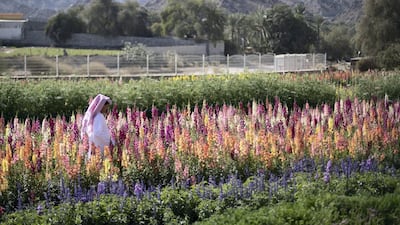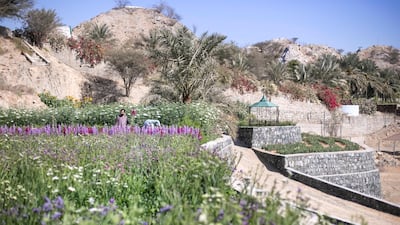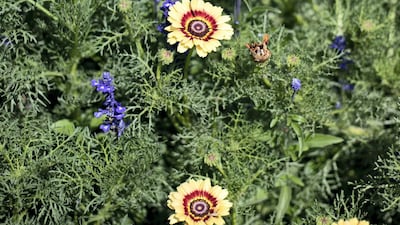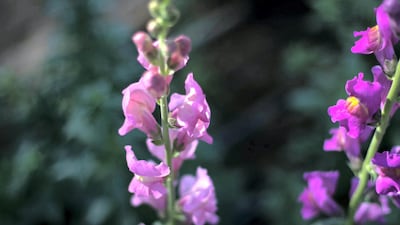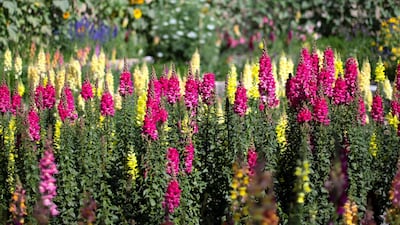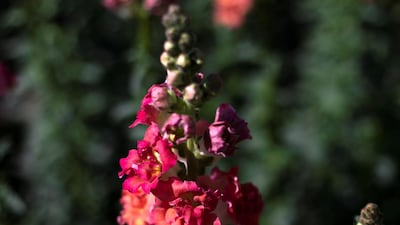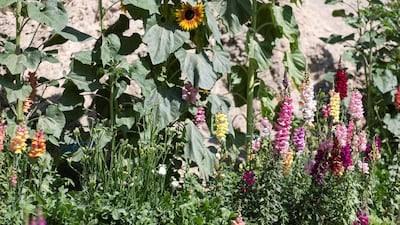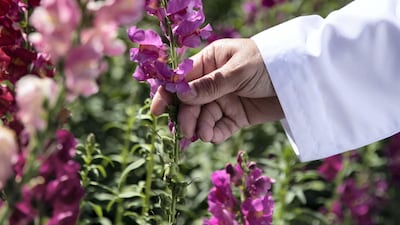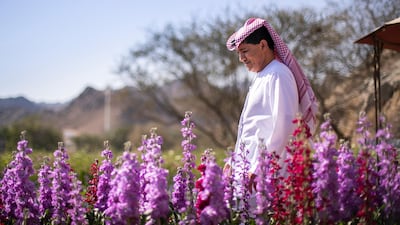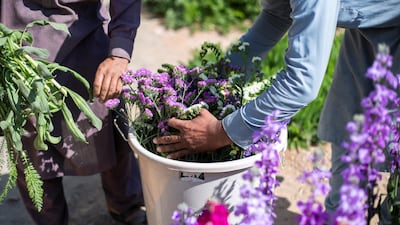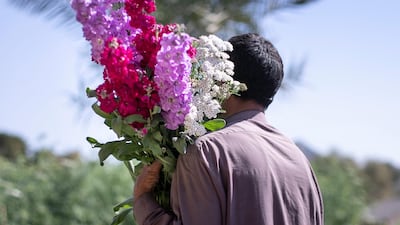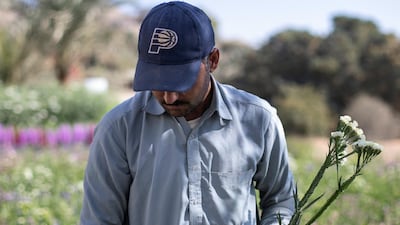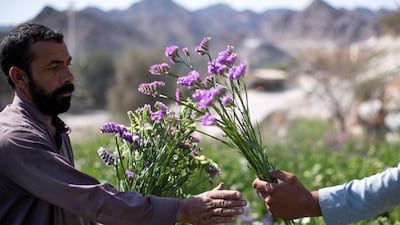In the Asimah Valley, a sprawling burst of colour defies the greys and browns of the surrounding Hajar Mountains. These hues of violet, pink, blue, orange and yellow belong to the flowers of the UAE Flower Farm in Fujairah, where Mohammed Al Mazroui has devoted the past seven years to keep his landscape blooming.
The farm’s most recent bloom totalled 30,000 flowers, which included larkspurs, hollyhocks, gladioli, sunflowers, snapdragons and marigolds, to name a few. All of these have been grown from the farm’s own seeds, which Al Mazroui, 50, has selected from previous harvests.
The Emirati businessman recently retired to turn his attention to flower farming full-time. Before that, he worked at the Central Bank of the UAE for 29 years.
His interest in horticulture goes back to when he was young. “I’ve loved flowers since childhood,” he says. “Some places are famed for their flowers … I’ve seen online how lush it is in the US and Europe, and wondered if I could do the same in this country. So I tried to grow flowers here.”

Over the years, he has developed his knowledge in horticulture by planting various species and adjusting his methods to adapt them to the UAE’s climate. “We don’t have the same weather here, so I learned the good months to plant different flowers,” he says.
His location in the Northern Emirates, with its higher altitudes and mountainous areas, has also helped his plants flourish. “The weather here is different from other emirates. They have high humidity and the soil is not as rich with minerals,” he explains.
Among the first flowers he planted is the snapdragon, which produces intensely vibrant flowers that grow along tall stalks. Al Mazroui purchased the initial seeds from the US, and soon grew more using his own. On the farm, varieties of yellow, pink and deep magenta abound.
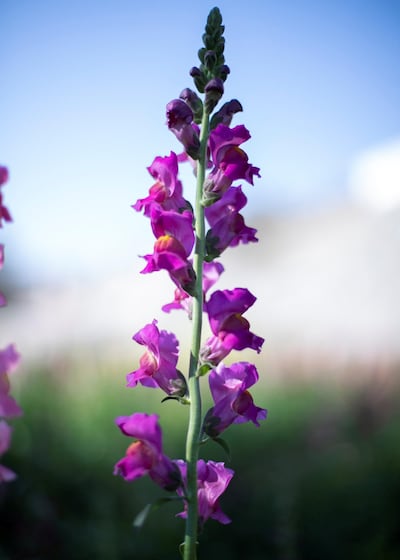
The farm boasts blue-violet larkspur, bright yellow dandelions and purple yarrow, a herb that produces clusters of small, delicate flowers. There's also hoary stock, saffron, white dill and coriander.
Al Mazroui says that he typically begins planting from September to October and harvests the flowers by April or May. The blooms are then sent to flower shops in Sharjah and Dubai, though the farm's business focuses on selling the seeds, which are usually sold to gardeners ordering on WhatsApp and Instagram.
More recently, he has decided to open up his farm to visitors, giving them the option to create their own bouquets and pay directly on site.
During the scorching summers, the land is left alone. Al Mazroui then travels to his other farm in Bosnia, where he spends two to three months with his family and tends to his flowers there.
While most other flower farms in the UAE rely on tents and greenhouses to grow their plants, Al Mazroui opts do to everything in the open air.
When needed, however, he sometimes employs tricks to cultivate certain species. For example, his next goal is to successfully grow tulips. Best known as a major export from Holland, the flower species originates from Central Asia and made its way to Europe through the Ottomans.
Tulip bulbs are typically planted in the autumn and continue to take root in winter. To replicate these conditions, Al Mazroui is refrigerating the potted plants before transferring them into the ground.
He also has his eyes set on growing narcissus or daffodil, which are planted as bulbs and produce white or yellow trumpet-shaped flowers. Like the tulip, the daffodil abhors the heat, but it’s a challenge Al Mazroui is willing to take on. “I like to try new things,” he says.
